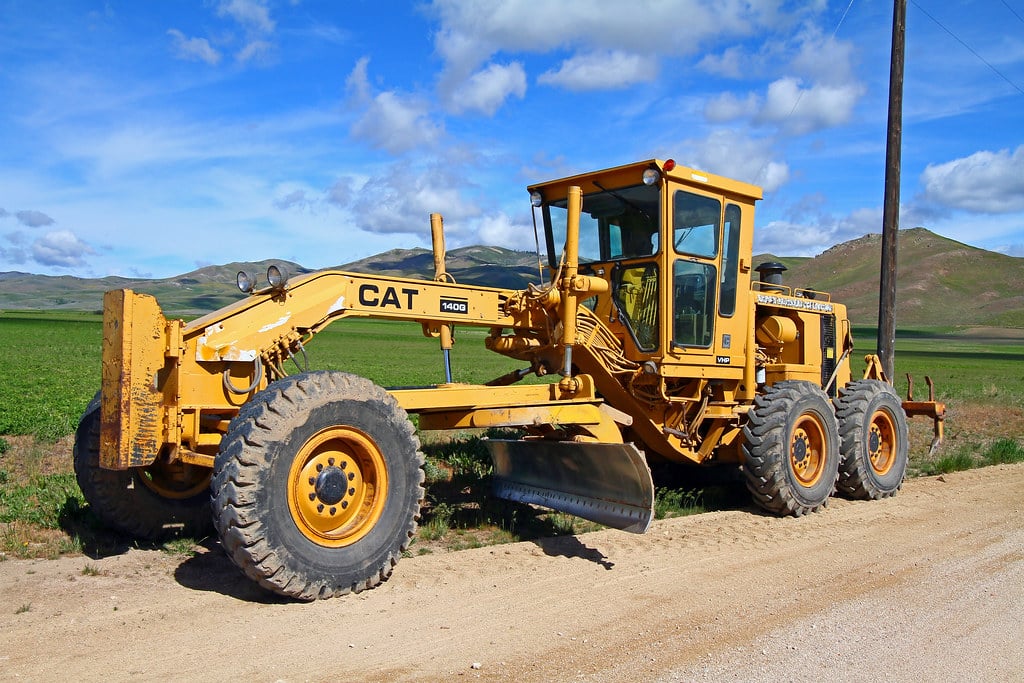
A Brief History of Motor Graders
Motor graders have evolved from simple, horse-drawn blades in the late 1800s to today’s precision, GPS-controlled machines essential to modern infrastructure. The first graders were manually operated and pulled by horses, used to level dirt roads during early road-building efforts. In 1919, the industry took a major leap with the introduction of the self-propelled grader by Russell Grader Manufacturing. The first self-propelled motor grader was introduced in 1920 by Russell Grader Manufacturing Company, which later became part of Caterpillar. When Caterpillar acquired Russell in 1928, graders began to gain traction (literally and figuratively) in large-scale construction.
Through the mid-20th century, graders improved steadily with the adoption of diesel engines, hydraulic blade controls, and operator cabs. By the 1970s, articulated frames allowed greater maneuverability — a game-changer for complex job sites. In the 2000s, digital innovation took over. GPS and laser-guided controls, onboard telematics, and automated blade adjustments turned motor graders into high-precision earthmoving tools. Emission-compliant engines and remote diagnostics became standard.
Today, motor graders are central to road construction, mining, agriculture, and urban development — and the future is heading toward automation, electrification, and full integration with smart jobsite systems.
Types of Motor Graders
All motor graders serve the same fundamental purpose: fine grading and road maintenance for smooth surfaces. In other words, leveling and shaping surfaces, but not all are built alike. Over time, as job site requirements have diversified, a lot of graders have been released on the market.
Rigid Frame
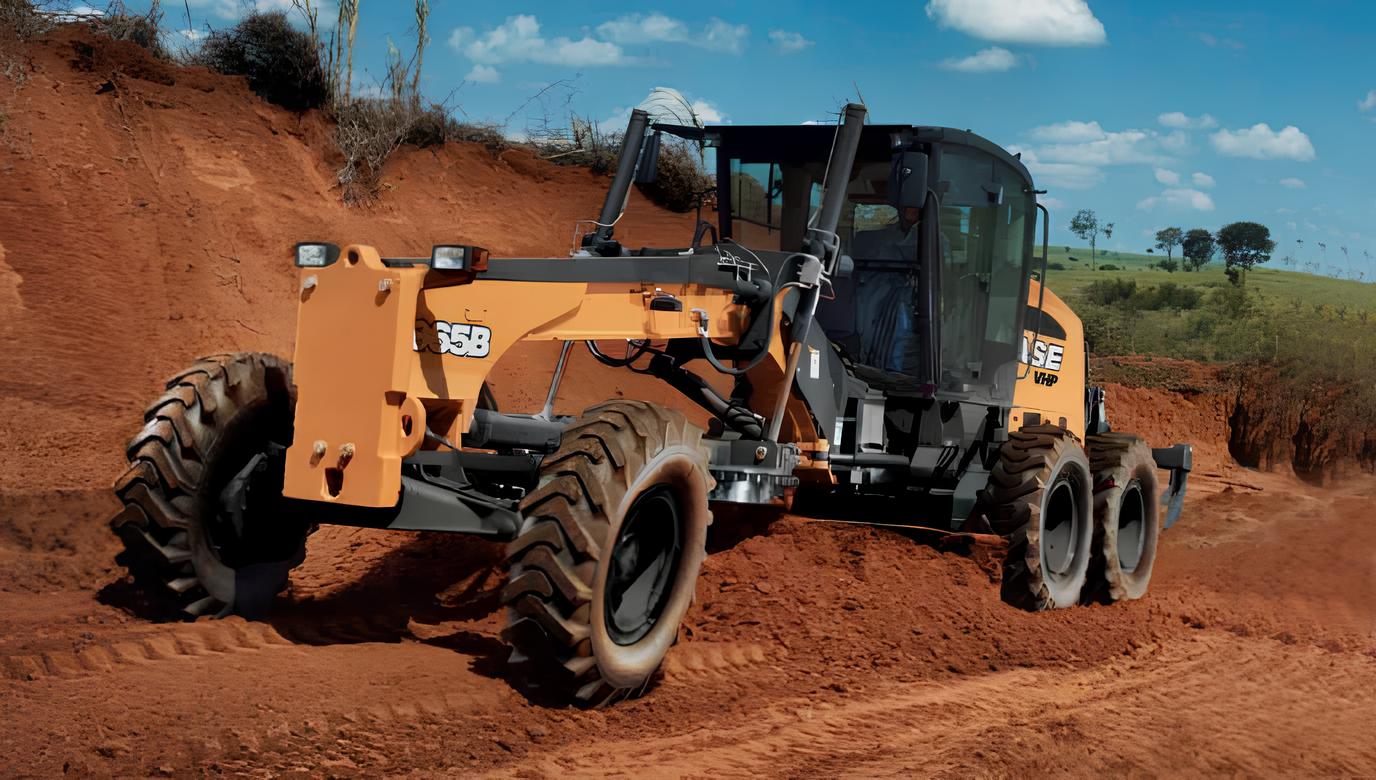
Rigid frame refers to a specific type of construction vehicle chassis, commonly used in off-highway trucks and haul trucks, that is built on a single, non-articulating frame. Unlike articulated frame trucks, which pivot at a central joint, rigid frame trucks maintain a fixed structure, meaning the cab and dump body are mounted on one continuous frame. Steering is achieved through traditional front-wheel mechanisms rather than articulation.
Rigid frame trucks are designed for maximum load-bearing strength, high structural integrity, and stability at high speeds. They are most commonly found in large-scale mining, quarrying, and heavy-duty construction applications, where terrain is relatively consistent and space allows for wide turning radii.
- Key Characteristics:
- Single-piece chassis – Non-articulated design provides superior structural strength and durability, especially under extreme payloads.
- High payload capacity – Typically ranges from 50 to over 400 tons, optimized for long, straight hauls.
- Conventional steering – Uses front-wheel steering; less maneuverable than articulated trucks but more stable at higher speeds.
- Powerful drivetrain – Equipped with high-horsepower diesel or diesel-electric engines for efficient performance in large operations.
- Operator-focused cab – Elevated position with ROPS/FOPS, advanced controls, and telemetry systems for productivity and safety.
- Typical Applications:
- Open-pit mining – Moving large volumes of ore, overburden, and waste rock.
- Quarry operations – Hauling aggregates and stones over stable terrain.
- Large infrastructure projects – Dams, airports, and highways where long-distance material transport is needed.
- Mass earthmoving – Ideal for high-volume haulage in expansive, relatively flat work sites.
Articulated Frame
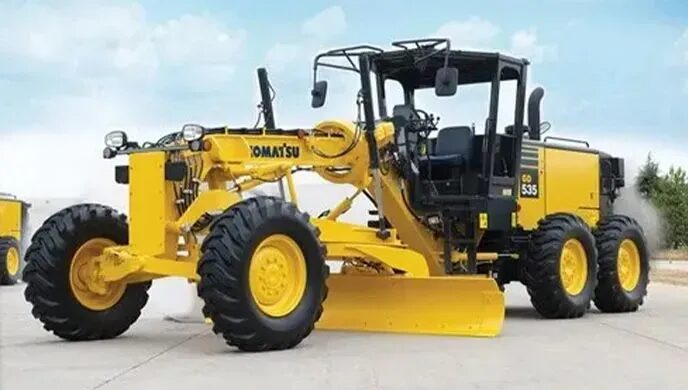
Articulated frame motor graders are a type of heavy construction equipment designed for precision grading and earthmoving tasks. Unlike rigid frame graders, articulated models feature a pivot point—typically located behind the cab—that allows the front and rear sections of the machine to articulate independently. This articulation enables enhanced maneuverability, especially in tight spaces or when working on curved or uneven surfaces.
The grader’s main working tool is a centrally mounted moldboard (blade), which can be tilted, raised, lowered, and rotated to perform a wide range of grading functions. These machines are essential for creating smooth, flat surfaces and are commonly used in road construction, maintenance, site preparation, and mining.
- Key Characteristics:
- Articulated Frame – Pivot joint behind the cab allows flexible movement between front and rear sections, enabling tight turning and better maneuverability on curves or uneven terrain.
- Adjustable Moldboard – Central blade with multi-axis hydraulic control for precise grading; available in various lengths, typically 10–14 feet.
- Powertrain – Diesel engines (140–300+ HP) paired with tandem or all-wheel drive systems and advanced transmissions for performance on diverse terrains.
- Operator Cabin – Ergonomic, climate-controlled cab with enhanced visibility, joystick controls, and optional telematics for monitoring and diagnostics.
- Grade Control Options – GPS or laser-guided 2D/3D systems for precision grading and automation.
- Typical Applications:
- Roadwork – Fine grading before paving, maintaining gravel roads, ditch shaping, and slope work.
- Mining & Quarries – Maintaining haul roads and preparing site access routes.
- Construction – Site preparation, leveling pads for buildings, and trench backfill.
- Agriculture & Forestry – Reclaiming land and maintaining rural or forest roads.
- Emergency Use – Debris clearing, rapid infrastructure repair, and temporary road creation.
Compact / Mini Grader
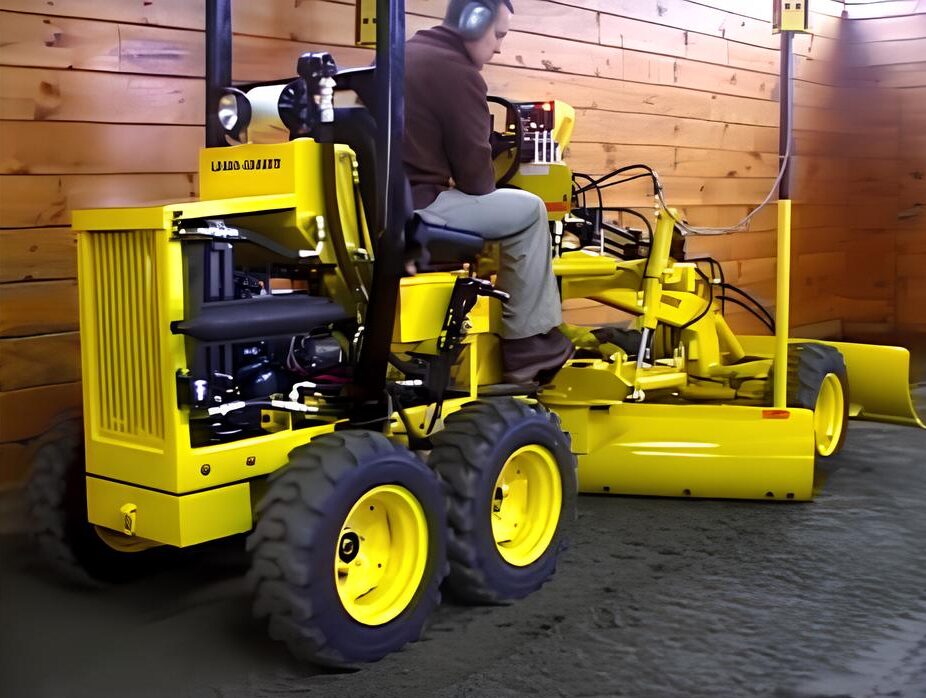
Compact or mini graders are scaled-down versions of traditional motor graders, engineered for small- to medium-scale grading tasks in urban, residential, agricultural, and light civil construction environments. These machines retain core grader functionality—such as precise blade control, surface levelling, and fine grading—while offering superior maneuverability, lower operating costs, and easier transport compared to full-sized models.
Typically ranging between 45 to 130 horsepower, compact graders are ideal for jobs where space constraints, surface sensitivity, or equipment weight limits are key factors. They are often used by municipalities, landscaping firms, small contractors, and utility service providers.
- Key Characteristics:
- Compact and Lightweight – Narrow frame and low operating weight (approx. 3.5–7 tons) make them ideal for confined or sensitive worksites.
- Blade Control – Moldboards typically 6–10 ft wide, with hydraulic functions for tilt, shift, and articulation.
- Efficient Power – Diesel engines from 45–130 HP; available in 2WD or AWD with hydrostatic or powershift transmissions.
- Simple Operation – Basic or joystick controls, open or enclosed cabs, user-friendly for new or occasional operators.
- Versatility – Compatible with attachments (e.g., snow plows, scarifiers), and some models support laser or GPS grading systems.
- Typical Applications:
- Municipal Work – Street repairs, alley grading, sidewalk and shoulder maintenance, snow clearing.
- Landscaping & Residential Construction – Leveling driveways, yards, or pads for small buildings.
- Agriculture – Maintaining farm tracks and regrading fields for irrigation.
- Utility Projects – Backfilling and smoothing trenches post-installation.
- Light Civil Jobs – Ideal for contractors needing portable, affordable grading solutions in small-scale environments.
Laser Grader
.jpg)
Laser graders are specialized grading machines designed to deliver ultra-precise surface leveling using laser-guided control systems. A rotating laser transmitter sets a reference plane, which onboard sensors detect to automatically adjust the blade’s height and angle in real time. This ensures highly consistent grade accuracy—often within ±3 mm—across the entire working surface.
These machines are commonly used in concrete slab preparation, sports field construction, fine landscaping, and agricultural field leveling. They can be standalone units or attachments mounted on compact equipment like skid steers or tractors. Laser graders significantly reduce manual labor, increase efficiency, and minimize material waste, making them ideal for projects where surface uniformity is critical.
- Key Characteristics:
- Laser-Controlled Blade – Automatically adjusts in real time for perfect grade accuracy—typically within ±3 mm.
- Compact or Modular Design – Often mounted on skid steers or tracked machines for maneuverability.
- Hydraulic Blade Control – Offers automatic or manual adjustment for height and slope.
- Ease of Use – Minimal training required; operator focuses on positioning while the system manages grading precision.
- Typical Applications:
- Concrete Slab Prep – Warehouses, industrial floors, and parking lots requiring uniform base levels.
- Sports Fields & Golf Courses – Creating perfectly flat or consistently sloped surfaces for play or drainage.
- Landscaping – Fine grading for lawns, pavers, or turf installation.
- Agriculture – Laser-leveling fields for efficient irrigation and water management.
Famous Models
- Caterpillar 140H
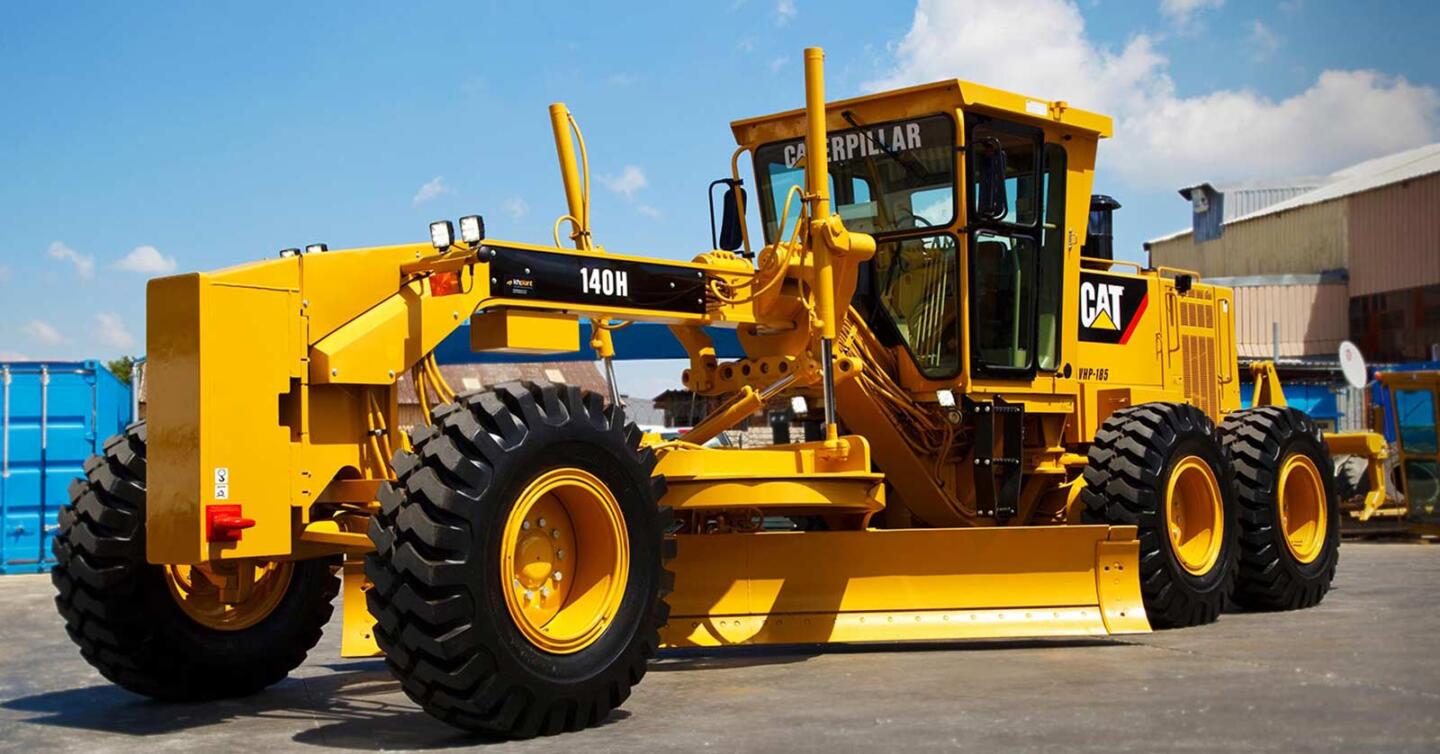
- Komatsu GD655
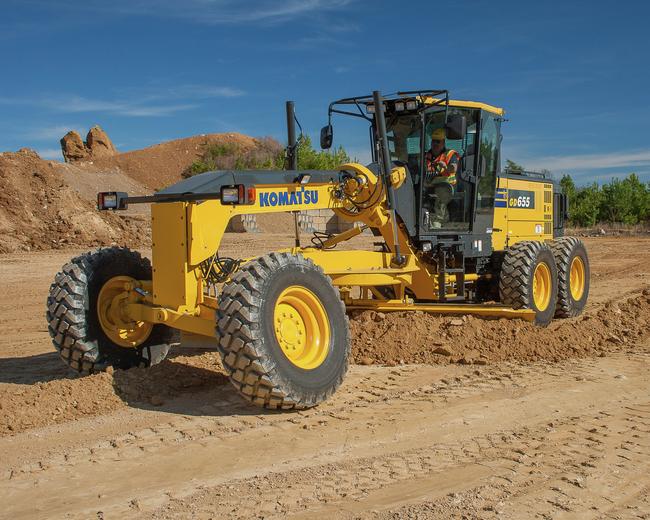
- John Deere 772G
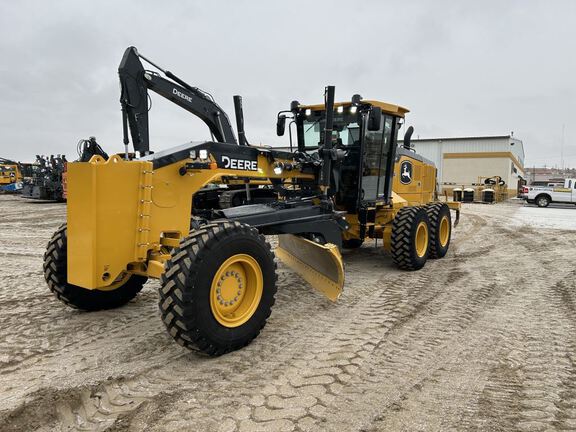
- Volvo G990
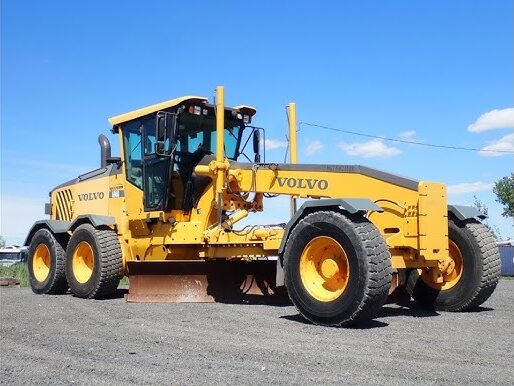
Main Uses of Motor Graders
- Road Construction – Shaping subgrade, maintaining base layer, shoulder construction
- Mining – Haul road maintenance, slope correction, water drainage
- Agriculture – Field leveling, drainage ditches, land preparation
- Urban Infrastructure – Utility trench backfilling, sidewalk leveling
- Snow Removal – With front blades or V-plows in municipalities
- Landscaping / Parks – Grading trails, golf course shaping
In Summary
Motor graders are precision earthmoving machines used to create smooth, level, or sloped surfaces in road construction, mining, site preparation, and land development. Their key feature is a centrally mounted moldboard that can be hydraulically adjusted for fine control over grading depth and angle. Available in compact, standard, and heavy-duty configurations, motor graders are valued for their versatility; capable of rough grading, fine finishing, ditching, and even snow removal when equipped with the right attachments. They are essential in building and maintaining infrastructure, offering high productivity, accuracy, and adaptability across varied jobsite conditions. As global infrastructure demands grow, so does the need for technologically advanced, fuel-efficient, and operator-friendly graders.


 Copyright 2017-2025 All rights reserved.
Copyright 2017-2025 All rights reserved.